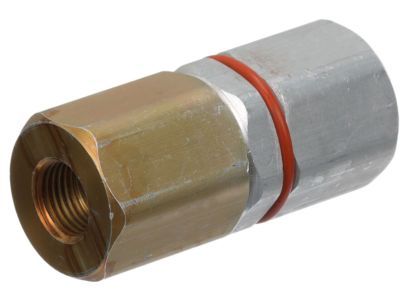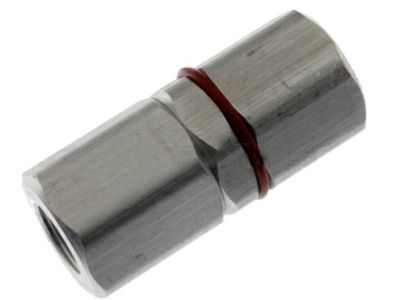
My Garage
My Account
Cart
Genuine Chrysler Cirrus Brake Proportioning Valve
Proportioning Valve- Select Vehicle by Model
- Select Vehicle by VIN
Select Vehicle by Model
orMake
Model
Year
Select Vehicle by VIN
For the most accurate results, select vehicle by your VIN (Vehicle Identification Number).
2 Brake Proportioning Valves found
Chrysler Cirrus Brake Proportioning Valve
The Brake Proportioning Valve in Chrysler Cirrus is a considerable part of the braking system that plays the role of adjusting different pressures of the hydraulic fluid in the system. Its purpose is primarily to prevent the rear drum brakes from engaging before the front disc brakes the event of hard braking, a scenario that affects the control and safety of a car. This is done by varying the pressure of the brake fluid that is supplied to the rear brakes so as to achieve two things; the first is to provide an even distribution of the brake force. Several styles of Brake Proportioning Valves, could be used in Chrysler Cirrus vehicles depending with the car's braking systems. The primary difference between them is in the ability to change the level of pressure differently for the front disc and rear drum brake, so that the necessary degree of distribution of the braking force is achieved. It is important for the overall tweak of the vehicle stability especially in occasions when there is an emergency rate of braking applied on the vehicle.
Looking for affordable and high-quality auto parts? Then you have already arrived at the proper online shop. We offer all Chrysler Cirrus Brake Proportioning Valve at great affordable prices. Moreover, all genuine Chrysler Cirrus Brake Proportioning Valve come with a manufacturer's warranty. In the long run, you would realize you have saved a lot of trouble and money with OEM parts from here.
Chrysler Cirrus Brake Proportioning Valve Parts Questions & Experts Answers
- Q: How Do Proportioning Valves Work on Chrysler Cirrus?A:All models have two proportioning valves that balance front-to-rear braking by controlling the increase in rear system hydraulic pressure above a preset level. Under light pedal pressure, the valve allows full hydraulic pressure to the front and rear brakes. But above a certain pressure - known as the "split point" - the proportioning valve reduces the amount of pressure increase to the rear brakes in accordance with a predetermined ratio. This lessens the chance of rear wheel lock-up and skidding. If either rear wheel skids prematurely under hard braking, it could indicate a defective proportioning valve. If this occurs, have the system checked out by your local dealer service department. A pair of special pressure gauges and fittings are required for proper diagnosis of the proportioning valves. While diagnosis is beyond the scope of the home mechanic, you may still save money by replacing the valves yourself. Loosen the right front wheel lug nuts, raise the front of the vehicle and support it securely on jackstands. Remove the wheel. Remove the accessory drivebelt splash shield. Loosen the brake hydraulic fluid lines from the proportioning valve with a flare-nut wrench to prevent rounding off the corners of the fittings. Back off the fittings and remove the valve from the line. Plug the ends of the lines to prevent loss of brake fluid and the entry of dirt. Installation is the reverse of removal. Bleed the brakes. Carefully test the brakes before resuming normal operation. If your vehicle was manufactured between 1995 and 1997 and equipped with ABS, the proportioning valves are mounted to the HCU and upon removal, the ABS system will be required to be bled using a DAB scan tool. We recommend you let your local dealer service department or other qualified repair shop replace the proportioning valves on these models. For 1998 and later models with ABS, loosen the appropriate rear wheel lug nuts, raise the rear of the vehicle and support it securely on jackstands. Remove the wheel. Loosen the line fitting from the proportioning valve with a flare-nut wrench to prevent rounding off the corners of the fittings. Be sure to hold the valve with another wrench to prevent the line from twisting. Detach the brake hose bracket from the upper frame rail. Unscrew the valve from the brake hose and plug the ends of the lines to prevent leakage and contamination. Installation is the reverse of removal. Fit the metal line to the proportioning valve before attaching the brake hose bracket to the upper frame rail.











